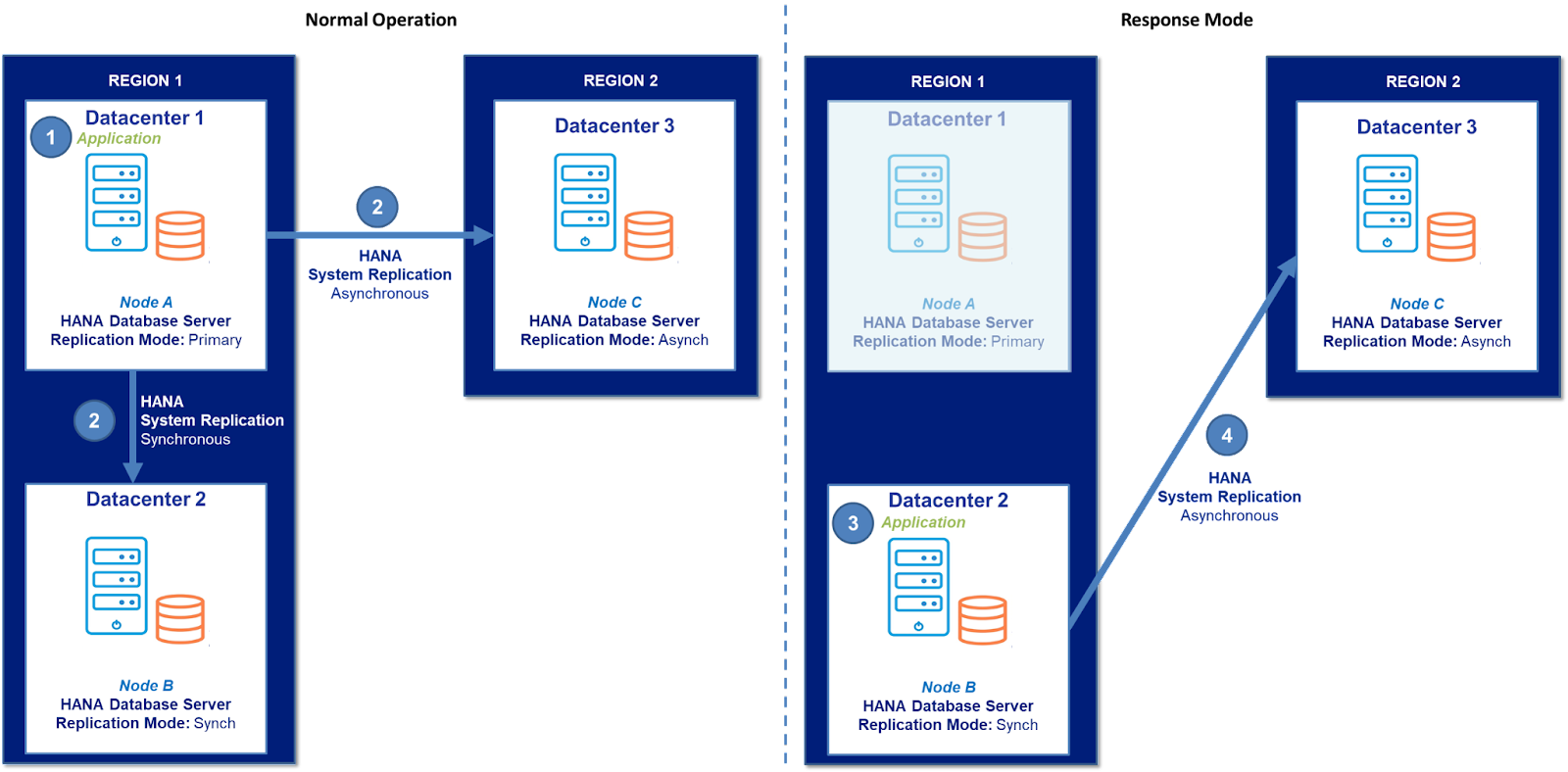If you’ve got SAP HANA databases, you know how essential it is to protect them from any downtime or disasters. Unfortunately, providing high availability clustering and disaster recovery protection for HANA databases can be a real headache. Configuring HA/DR with many clustering solutions is often a time-consuming and intricate process that involves lots of complicated scripting – while simultaneously addressing the source of the failure. And when things get that complex, it’s easy for errors to creep in, leading to unreliable failover and extended downtime. But don’t worry – in this blog, we’ll take a look at how the multitarget feature in the new V9.7.0 of SIOS LifeKeeper for Linux can make your life a lot easier by automating the failover and orchestrating the DR replication ensuring your HANA databases are always protected from local, sitewide and regional disasters. Read what analysts have to say about V9.7.0 of SIOS LifeKeeper for Linux.
Automated HA/DR for up to four cluster nodes
The new HANA Multitarget feature enables you to deploy a high availability environment where HANA operates on a primary node and can failover to up to three secondary nodes located in different cloud Availability Zones or on-premises disaster recovery locations.
SIOS LifeKeeper is an advanced clustering software that monitors the health of the entire IT stack – including network, storage, operating system, application, and hardware – and communicates with all associated cluster nodes. It also supports synchronous or asynchronous block-level replication of primary node storage to two or three secondary DR nodes using HANA System Replication (HSR). If it detects an issue with application or database availability, it automatically moves operation to a secondary node in the cluster and ensures that node now replicates to the DR node(s) – maintaining DR protection and eliminating the need for error-prone scripting.

In normal operating conditions, the application (1) is running on primary node A located in Datacenter 1, Region 1. HSR is used to replicate storage from Node A to secondary nodes B and C (2). If SIOS LifeKeeper detects an application availability issue on Node A, it automatically orchestrates an application failover to Node B (3) and switches DR replication from Node B to Node C (4). When normal operation is restored to Node A, LifeKeeper automatically restores original replication settings with a single click.
SIOS LifeKeeper for Linux
SIOS LifeKeeper for Linux version 9.7.0 delivers the most comprehensive high availability protection from local, sitewide, and regional disasters. It ensures that your essential HANA database resumes operations quickly and reliably, so you can be confident that your mission-critical workload is protected.
In addition, to HANA Multitarget feature, SIOS LifeKeeper for Linux version 9.7 offers other new features and capabilities such as added support for WebSphere MQ v9.3, RHEL v9.0, SAP HANA on RHEL 8.6 and SLES 15 SP4, and SAP HANA on S/4HANA 2022.



